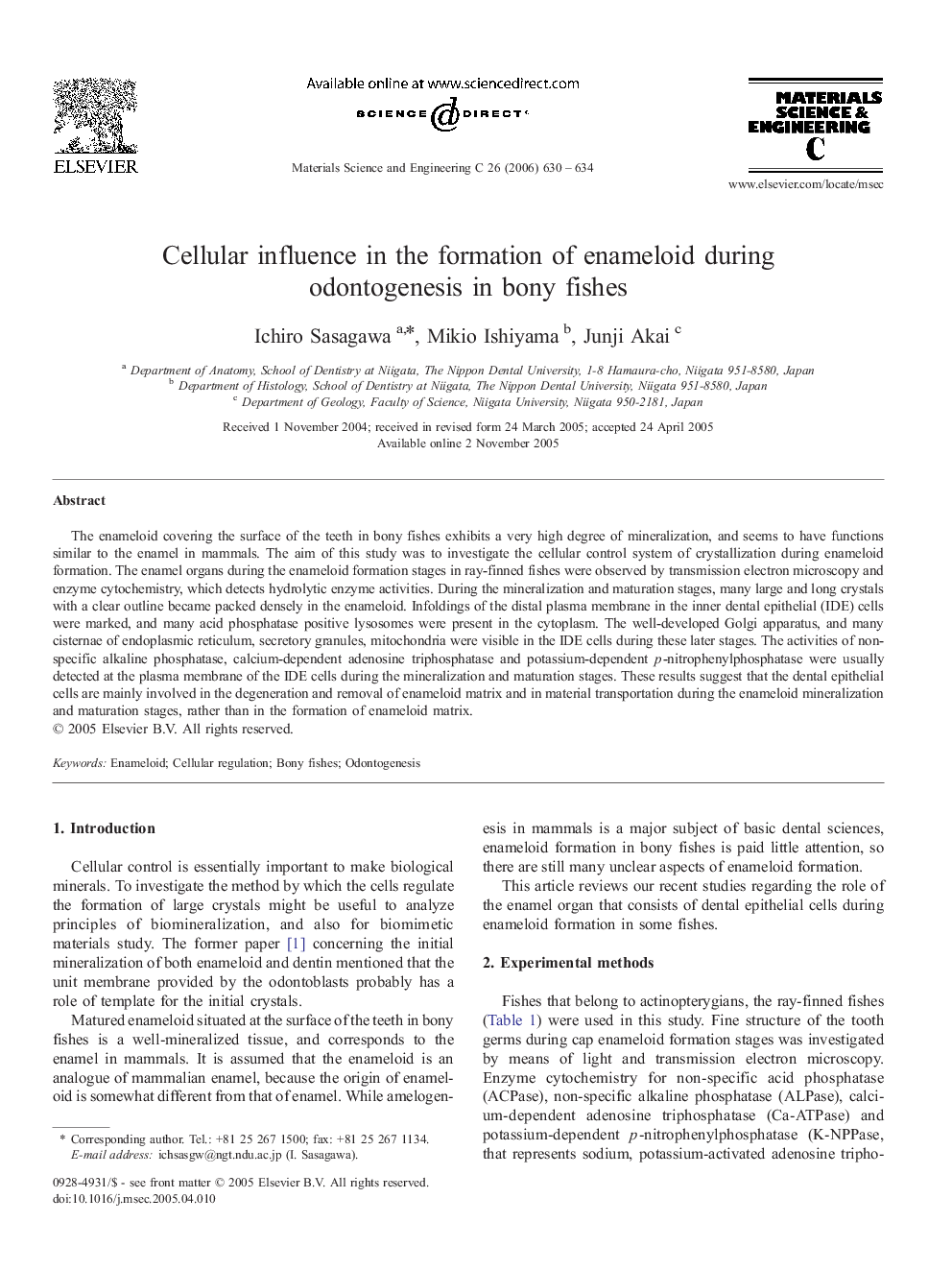| Article ID | Journal | Published Year | Pages | File Type |
|---|---|---|---|---|
| 1431020 | Materials Science and Engineering: C | 2006 | 5 Pages |
Abstract
The enameloid covering the surface of the teeth in bony fishes exhibits a very high degree of mineralization, and seems to have functions similar to the enamel in mammals. The aim of this study was to investigate the cellular control system of crystallization during enameloid formation. The enamel organs during the enameloid formation stages in ray-finned fishes were observed by transmission electron microscopy and enzyme cytochemistry, which detects hydrolytic enzyme activities. During the mineralization and maturation stages, many large and long crystals with a clear outline became packed densely in the enameloid. Infoldings of the distal plasma membrane in the inner dental epithelial (IDE) cells were marked, and many acid phosphatase positive lysosomes were present in the cytoplasm. The well-developed Golgi apparatus, and many cisternae of endoplasmic reticulum, secretory granules, mitochondria were visible in the IDE cells during these later stages. The activities of non-specific alkaline phosphatase, calcium-dependent adenosine triphosphatase and potassium-dependent p-nitrophenylphosphatase were usually detected at the plasma membrane of the IDE cells during the mineralization and maturation stages. These results suggest that the dental epithelial cells are mainly involved in the degeneration and removal of enameloid matrix and in material transportation during the enameloid mineralization and maturation stages, rather than in the formation of enameloid matrix.
Related Topics
Physical Sciences and Engineering
Materials Science
Biomaterials
Authors
Ichiro Sasagawa, Mikio Ishiyama, Junji Akai,
